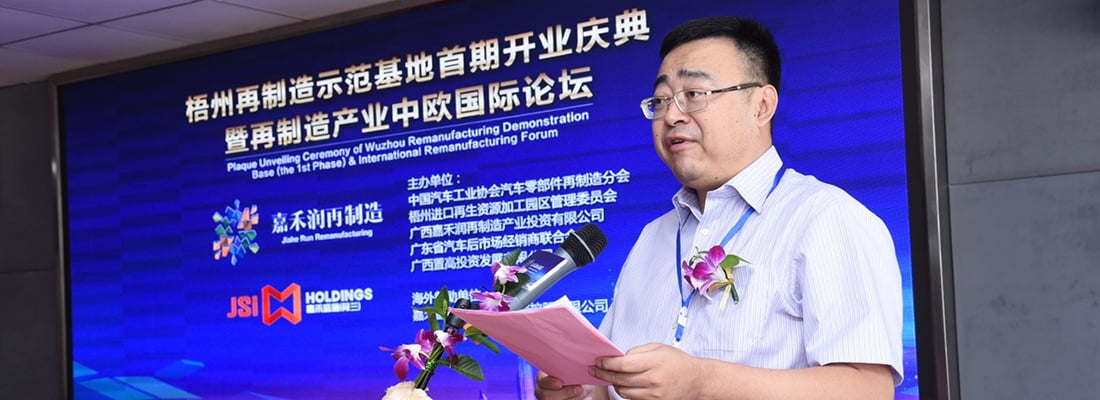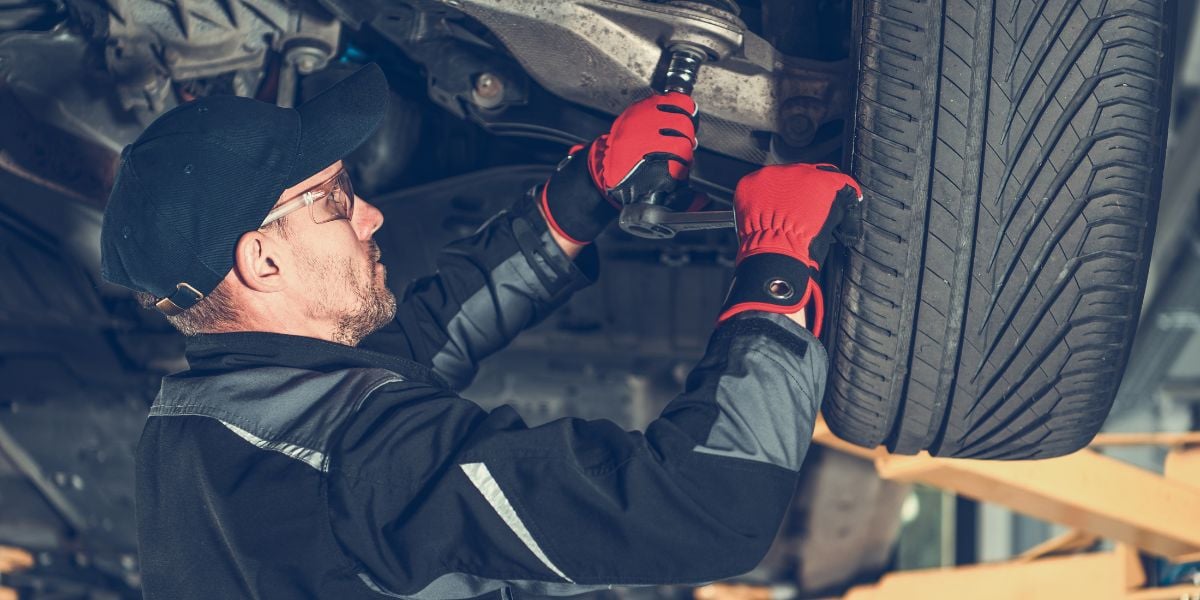The Start of a Journey
Xie Jianjun, secretary general of the Remanufacture Committee of China Association of Automobile Manufacturers, tells Adam Hill that the Chinese reman industry is set to grow.
Listen to Xie Jianjun and you could be in the presence of any enthusiastic reman executive: customer perception, difficulty getting hold of cores and the short lifespan of cars - to name but three issues he talks about – are common enough to all. But Xie, who is secretary general of the Remanufacture Committee of China Association of Automobile Manufacturers (CPRA), knows that his own industry is at the beginning of a long journey. Reman faces a couple of big problems in China: the public does not have much time for its products - partly because the country’s industrial scale and relatively cheap labour force means that brand new, inexpensive parts can rival reman ones. Speaking through an interpreter, Xie explains: “Because the reman industry in China has a short history – it started a decade ago – the most challenging thing is the consumer: we have to build a reman industry that they can trust. This means we need to create a very structured reman market.” He sees two ways of doing this: in the first place the government needs to support reman and the media needs to help publicise the industry; and secondly, companies themselves must promote their products to the public via events and roadshows. The first of these can be ticked off the list: government support is vital, and the country’s administration is keen to promote the circular economy, spotting an opportunity to create high quality jobs through reman and, at the same time, to demonstrate its environmental credentials.
Government support
The government has approved four remanufacturing industrial demonstration parks – which offer preferential treatment (such as subsidies, tax breaks and access to funds) to companies which invest in them – and these are going to be the engine of reman in China. “The government wants to stimulate demand for reman,” Xie insists. “For example, if you replace your old parts with reman parts then the government will give you a subsidy.” This ‘Remanufactured for Used Products’ incentive scheme offers customers 10% of the purchase price up to a certain amount. Started last year, the pilot project has been a success, he says. Legislation such as the Circular Economy Promotion Law has also helped. “We have all kinds of approaches in China – but there is more to do, of course,” he smiles. The CPRA was established in 2010 in part to develop closer ties with various industry bodies in other countries, such as APRA. Yet foreign companies have nothing to fear from China’s increasing interest in reman, he insists. “China’s reman industry is just ten years old,” he points out. “We have a lot to learn from foreign companies: knowledge and experience can be exchanged.” China is also a huge market, he goes on. “If we’re all co-operating, then there’s no threat – instead, it’s an opportunity. There are no barriers to selling in China.” There is certainly some encouragement for western companies to get involved in joint ventures. “Most local Chinese reman companies are not trying to conquer Europe or America,” he insists.
Core access
Access to cores has been held up by observers as one of the main problems for reman in China. But Xie is sanguine: “There are around 170 million passenger cars on the Chinese market at present, and that is predicted to rise to 250 million by 2020. That’s comparable to the US. So I foresee that the core resource is in fact very big. The average age of a car in China is four-and-a-half years – compared with Europe, which is a lot longer.” Companies are gradually being allowed by the government to get their hands on cores, although there remains a lot of red tape. “There are still restrictions for Chinese players to buy cores from abroad,” Xie acknowledges. “The association is putting in a lot of effort to make things freer in the economy.” Various firms are at present negotiating for the import of cores, he says – and economic freedom is going to be a vital part in the success of Chinese reman. But China’s relatively recent industrial development – compared to many more mature markets – gives it some real advantages, he goes on: “In the past few years, the average sales volume increase has been about 30% a year. It’s not that easy in the western world. This is a huge market – that’s how we look at it. But reman only accounts for 2-3% of the market. This is a small proportion compared to Europe and the US.”
Growth expectations
That being the case, how much can reman grow in China? “In the short-term there is no limit,” he insists. “Demand for the gearbox market is predicted to be 400,000 – 500,000, for example. But reman last year only produced 100,000: compare that with the US and EU aftermarket.” He lists again the most important things to allow reman to develop in China. “The first is market acceptance,” he begins. “The potential is so big – but then so are the barriers. Consumers are used to buying new products rather than reman. That means we have to put a lot of effort into teaching the consumer – I’m not so sure this is a big issue in Europe and the US.” He then mentions an issue which will be familiar to everyone in the reman sector. “Also, there is a long-term struggle between reman companies and OE companies,” he continues. “That’s not very easy to solve – especially for the independent reman operators because the space for them in the market is not very big. OE companies get involved and want to reman their own products – that’s a big challenge for independents.” Add this to the fact that the over-production of cheap new products creates a problem for the developing reman industry in China, and you would seem to have some pretty high hurdles to get over. But with the market potential – and government support – Xie’s quiet confidence suggests that it would not be wise to bet against China’s reman sector overcoming those odds.




